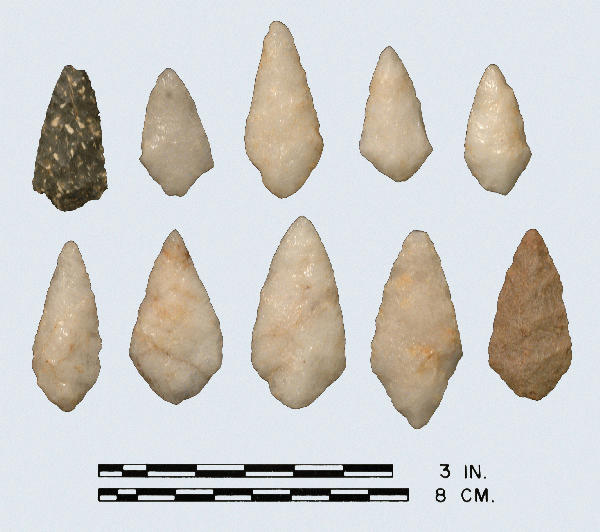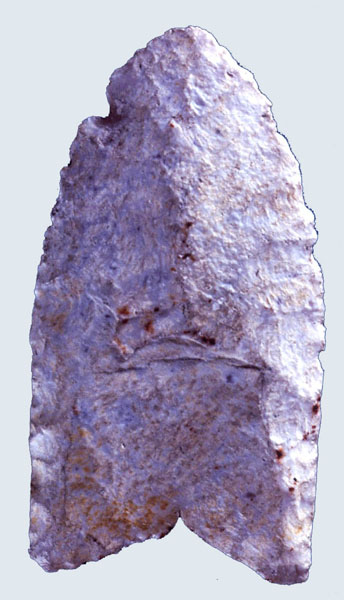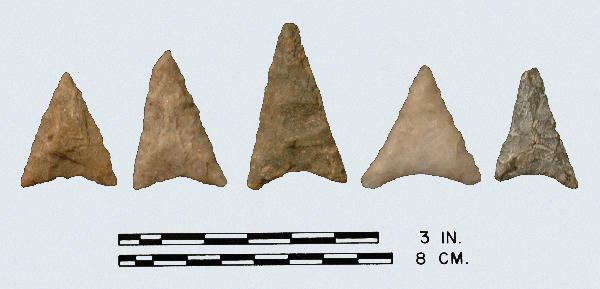
Rossville: Top Row: rhyolite, quartz, quartz, quartz, quartz; Bottom Row: quartz, quartz, quartz, quartz, quartzite.
Type Tapering Middle Woodland
Defining Attributes
The Rossville is a medium sized, thin, well made point with semi-prominent shoulders, a contracting stem, and pointed or rounded base.
Chronology
The Rossville point dates to the first half of the Middle Woodland period, 500 BCE to 400 CE.
Description
- Blade: The blade is thin and edges are typically convex to straight with a sharp tip. The base of the blade forms sloping, semi-prominent shoulders at the juncture with the stem.
- Base: The base is pointed or rounded. The stem contracts toward the base with straight or convex edges.
- Size: Length ranges from 24 to 58 mm. with an average of 40 mm. Width ranges from 17 to 30 mm. with an average of 21 mm. Thickness ranges from 6 to 9 mm. with an average of 7 mm.
- Technique of manufacture: Well made by pressure flaking on all surfaces.
Discussion
The Rossville point is similar to the Piscataway type, but larger and wider, with a larger stem. Some researchers believe that the Piscataway and Rossville types are the same and date to the Middle Woodland period (Dent 1995). Rossville is the last in the series of point types of the tapering base tradition that started five thousand years earlier with Morrow Mountain I.
Defined in Literature
This type was originally described by Ritchie (1961 revised 1971) and further defined by Stephenson (1963) based on points recovered from the Accokeek Creek Site in Maryland.
References




